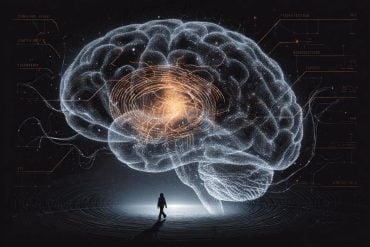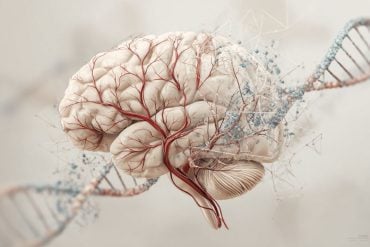Summary: Researchers discovered in mice that passive exposure, alongside active training, can significantly enhance the learning process. This study demonstrates how passive exposure to stimuli like sounds or languages helps the brain to form foundational representations, making active learning more efficient.
The findings, which align with prior research in humans, suggest that combining low-effort passive exposure with active training can lead to quicker mastery of new skills, such as learning a musical instrument or a foreign language.
Key Facts:
- Mice exposed to sounds passively, in addition to active training, learned to associate sounds with rewards more quickly.
- Artificial neural network simulations indicate that passive exposure creates a foundational representation of stimuli in the brain.
- The study’s insights align with human research, suggesting a combined approach of passive exposure and active training could enhance complex skill learning.
Source: University of Oregon
Learning a new skill takes deliberate practice over time, but passive exposure to the subject matter at hand can help speed up the process, new University of Oregon research in mice suggests.
The finding, which builds on past research in humans, shows how passive exposure can be a valuable tool for learning. It helps explain how watching movies in a foreign language might supplement grammar drills and vocabulary flashcards, or how listening to recordings of a professional playing piano concertos could help budding musicians improve their own craft.
The study gives additional insight into the possible brain mechanisms behind the effect, helping scientists understand just why passive exposure is so powerful, said James Murray, a UO neuroscientist who led the study alongside fellow UO neuroscientist Santiago Jaramillo, both part of the College of Arts and Sciences.
Because it’s much easier to study what’s happening inside the brain of a rodent than a human, “studying how both active training and passive exposure affect learning in mice opens up exciting possibilities for investigating the neural mechanisms underlying the interplay between them,” Murray added.
The researchers describe their findings in a paper published in the journal eLife.
To study how mice learn, researchers trained the animals to reach for a reward in a particular spot in response to tones that slid up or down in pitch. All of the mice were put through an active training protocol, in which they got feedback on their performance so they knew whether they made the right choice. Some of the mice also got passive exposure, where they heard the sounds while they weren’t engaged in the task.

The mice who were passively exposed to the sounds in addition to being actively trained learned how to select the reward location more quickly, the researchers showed. It didn’t seem to matter whether the passive exposure happened at the beginning of training or was interspersed in small chunks throughout the active training sessions.
Then, to better understand how the learning might be happening in the brain, the researchers trained and tested different artificial neural networks on a simulated version of the learning task. Neural networks, a kind of machine learning algorithm, process information in a way that mimics the way the brain processes information.
Artificial neurons represent real neurons, and learning takes place by modifying the strengths of the connections between those neurons. They’re not a direct replica for the brain, but they can be used to generate hypotheses that can then be tested experimentally.
The modeling suggests that passive exposure to a stimulus lays the groundwork in the brain, creating a hidden representation of that stimulus that captures its most prominent features, like making a pencil outline before diving into a detailed painting. Then, during active learning, the brain links the stimulus to particular behaviors. With passive exposure, the brain is primed to make those connections more quickly.
In the future, the team hopes to record brain activity in mice during a similar learning task, to see if their predictions play out.
While the research was done using a simple task in mice, the findings might also have implications for more complex learning in humans, the researchers suggest. Study co-author Melissa Baese-Berk, a former UO linguist now at the University of Chicago, has previously published studies showing how passive exposure can help adult humans better learn to understand new speech sounds.
“Alongside the previous work on humans from Melissa and her collaborators, our results suggest that, in mice and in humans, a given performance threshold can be achieved with relatively less effort by combining low-effort passive exposure with active training,” Murray said.
“This insight could be helpful for humans learning an instrument or a second language, though more work will be needed to better understand how this applies to more complex tasks and how to optimize training schedules that combine passive exposure with active training.”
About this learning and neuroscience research news
Author: Laurel Hamers
Source: University of Oregon
Contact: Laurel Hamers – University of Oregon
Image: The image is credited to Neuroscience News
Original Research: Open access.
“Passive exposure to task-relevant stimuli enhances categorization learning” by James Murray et al. eLife
Abstract
Passive exposure to task-relevant stimuli enhances categorization learning
Learning to perform a perceptual decision task is generally achieved through sessions of effortful practice with feedback.
Here, we investigated how passive exposure to task-relevant stimuli, which is relatively effortless and does not require feedback, influences active learning.
First, we trained mice in a sound-categorization task with various schedules combining passive exposure and active training.
Mice that received passive exposure exhibited faster learning, regardless of whether this exposure occurred entirely before active training or was interleaved between active sessions.
We next trained neural-network models with different architectures and learning rules to perform the task. Networks that use the statistical properties of stimuli to enhance separability of the data via unsupervised learning during passive exposure provided the best account of the behavioral observations.
We further found that, during interleaved schedules, there is an increased alignment between weight updates from passive exposure and active training, such that a few interleaved sessions can be as effective as schedules with long periods of passive exposure before active training, consistent with our behavioral observations.
These results provide key insights for the design of efficient training schedules that combine active learning and passive exposure in both natural and artificial systems.







